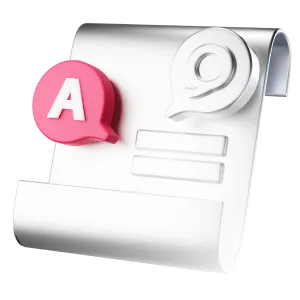An oil filter housing replacement is a relatively simple car repair that starts at around $300 and can take an average of two to five hours, although it could take longer if the technician has to remove other engine components to access the housing.
How much does an oil filter housing replacement cost?
The average cost to replace an oil filter housing can range from around $300 to over $800, depending on the make and model of your vehicle and where you get the service done. Higher-end cars, like a BMW, can cost significantly more.
If your oil filter housing is easy to access and you drive a relatively common car with inexpensive parts, your cost will likely be lower. If your vehicle requires hard-to-source parts or the mechanic has to remove several other components before replacing the housing, your repair costs may be higher.
Do you need an oil filter housing replacement?
You might need an oil filter housing replacement if:
- You smell burning oil when you’re driving.
- Your vehicle overheats.
- You hear ticking or knocking noises coming from the engine.
- Your car leaks oil when it’s parked.
- Your low oil pressure light comes on.
- The oil level in your car is low when you check the dipstick.
- You see oil in the engine compartment or spot cracks in the oil filter housing.
If you notice any of these signs, you may need to have your vehicle serviced. If your oil levels drop, it can lead to serious damage to your vehicle’s engine, radiator, and heating and cooling systems.
What is an oil filter housing?
As motor oil circulates through your engine, it can pick up contaminants like dirt, dust and metal particles. Over time, these contaminants can damage your car’s engine. To prevent that, the oil is pushed through a filter that helps remove unwanted particles.
Engines that use a cartridge-style oil filter have a permanently attached filter housing. You can change the filter, o-rings and gaskets, but the housing stays in place — unless it’s damaged and needs to be replaced.
Need to know: Some vehicles use a spin-on oil filter that’s encased in a canister. These vehicles don’t have an attached oil filter housing. The canister acts as the housing, and the entire assembly is replaced when the oil filter is changed.
What causes an oil filter housing to leak?
Here are some common reasons an oil filter housing might crack:

Tightening the filter too much during a change or installation.

Normal wear and tear due to heat, contaminants or corrosion.

Impact from a collision with a car or other object.
How long does it take to replace an oil filter housing?
On average, replacing the oil filter housing can take about two to five hours, but this can vary depending on the make and model of your vehicle and the technician’s experience.
The actual task of replacing the housing is fairly simple, but it can be time-consuming. The technician may need to remove other components — like the engine cover, fuel injectors and intake manifold — before they can access the housing. In some cases, it will be necessary to remove these components just to determine whether the oil filter housing is the source of the problem.
The technician may also perform an oil filter housing gasket replacement and oil change at the time of the repair. If any other engine components were damaged by oil, these may need to be removed and replaced as well.
Can you replace an oil filter housing yourself?
Depending on how accessible your oil filter is, the oil filter housing replacement can be a relatively easy DIY job if you have experience working on cars. If you don’t have much mechanical experience or you need to remove other components to access your filter housing, you should probably leave this job to a professional.

Expert insurance writer and editor Amy Bobinger specializes in car repair, car maintenance, and car insurance. Amy is passionate about creating content that helps consumers navigate challenges related to car ownership and achieve financial success in areas relating to cars. Amy has over 10 years of writing and editing experience. After several years as a freelance writer, Amy spent four years as an editing fellow at WikiHow, where she co-authored over 600 articles on topics including car maintenance and home ownership. Since joining Jerry’s editorial team in 2022, Amy has edited over 2,500 articles on car insurance, state driving laws, and car repair and maintenance.

Kevin Berry is the Senior Director of Content at Jerry and has been working in the digital content space since 2011 across the car insurance/repair, personal finance, travel and sports industries. Prior to Jerry, Kevin was a content team lead at NerdWallet overseeing the Multimedia Production and Travel Rewards teams. Previously, he worked for NBC Sports, Comcast Cable and Nike. He has a Master`s Degree from Arkansas State and a Bachelor`s from Oregon State University.
*The price information provided on our car repair webpages is intended for general informational purposes only. Actual prices for car repair services may vary based on various factors, including but not limited to the make and model of your vehicle, the extent of repair required, and the prevailing market conditions. All prices for real repair shops are estimations based on our research only. Therefore, the prices listed on our webpages should not be considered as final quotes or binding offers.








